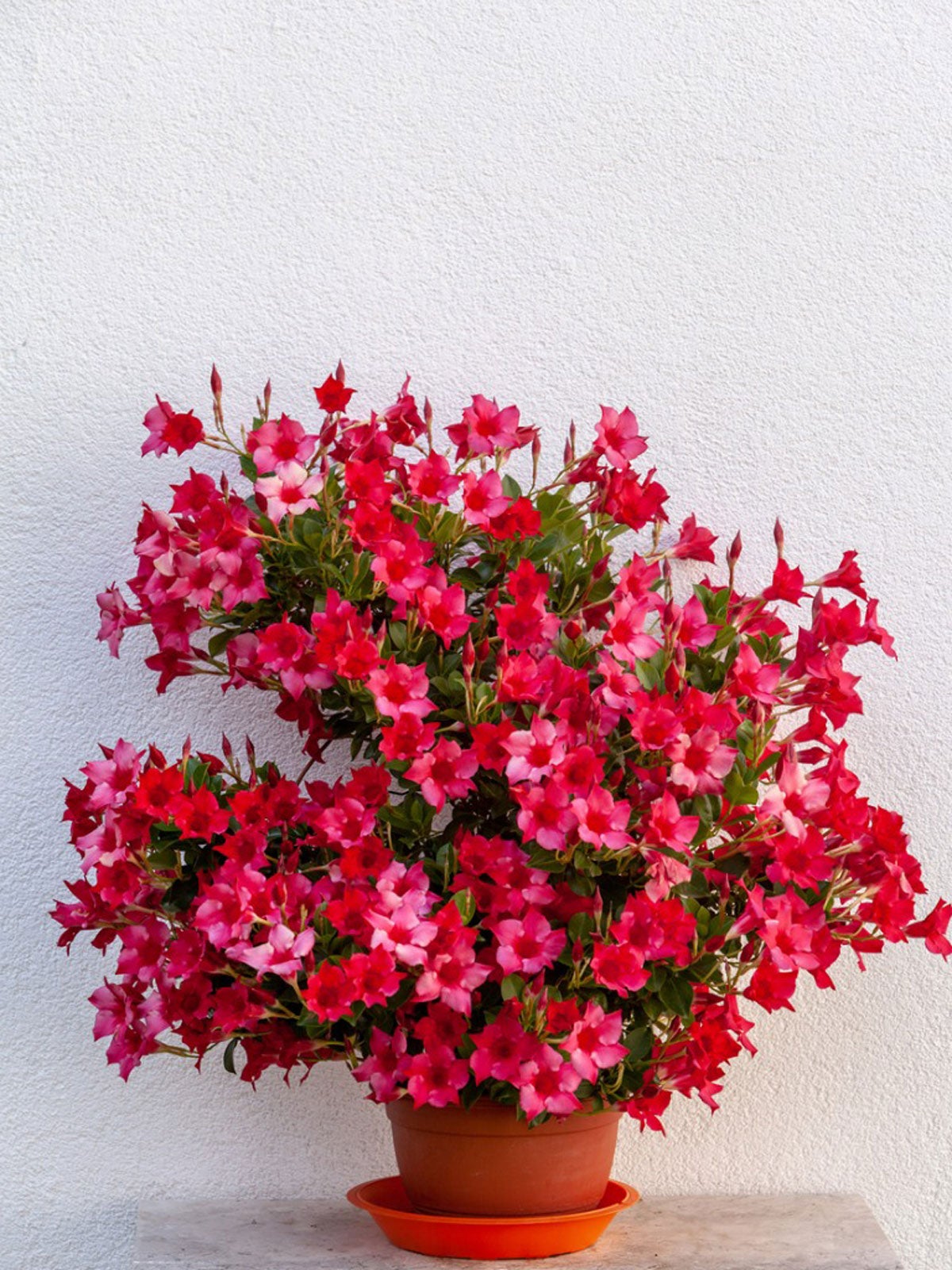Growing Mandevilla Vine Indoors: Caring For Mandevilla As A Houseplant


Mandevilla is a native tropical vine. It produces masses of bright, usually pink, trumpet-shaped flowers which may grow 4 inches (10 cm.) across. The plants are not winter hardy in most zones of the United States and have a temperature minimum of 45-50 F. (7-10 C.). Unless you are in the tropical south, you will need to grow mandevilla as a houseplant. This plant has particular needs and growing mandevilla vine indoors can take some space.
Mandevilla Growing Conditions
The vine is hardy to USDA zone 9, which means you need to grow mandevilla as a houseplant during the fall and winter in cooler climes. In nature the vines twine around any available edifice or support and can grow up to 30 feet (9 m.) in length. They prefer partial sun in rich moist soil with plenty of organic matter. As outdoor plants, they need water frequently and fertilizer every two weeks in spring and summer with a high phosphorus food. The plant will go dormant in winter and may even lose some of its leaves but will regrow when spring warms up the air. The best temperatures for mandevilla are above 60 F. (15 C.) at night.
Mandevilla as a Houseplant
Moving the plant to the interior provides different growing conditions for it. Therefore, it is important to know how to care for mandevilla indoors. Mandevilla houseplants should not be moved inside until you are sure there are no bug hitchhikers. Mandevilla houseplants are a bit fussy and require special growing conditions. In its habitat it can grow 7 to 10 feet (2-3 m.) per season, so this isn't a little counter top or window box houseplant. Trim the plant as needed to keep it in the confines of the room in which it is growing. A greenhouse environment is ideal or you can grow the plant near a sunny window with some protection from scorching midday sun. If you are growing mandevilla vine indoors, don't be surprised if it doesn't flower. You would need excess high artificial light to force buds and blooms. The plant will not bloom when overwintering mandevilla inside and goes dormant until brighter spring light arrives.
How to Care for Mandevilla Indoors
You can just grow it like a regular plant inside or you can cut it back to just 8 to 10 inches (20-25 cm.) and pot it up. Move the pot to a cool, dim area where temperatures average 55 to 60 F. (13 to 15 C.). Cut watering in half during the dormant period and remove spent leaves and dead plant material in spring. The indoor mandevilla plant needs to remain fairly dry to prevent rot. Keep the indoor mandevilla plant moderately dry over the winter and with a little luck you will see sprouts in spring. Move the pot to a sunny location and pinch the shoots to force bushier growth. Start fertilizing every two weeks with a high phosphorus plant food.
Sign up for the Gardening Know How newsletter today and receive a free copy of our e-book "How to Grow Delicious Tomatoes".

Bonnie Grant is a professional landscaper with a Certification in Urban Gardening. She has been gardening and writing for 15 years. A former professional chef, she has a passion for edible landscaping.